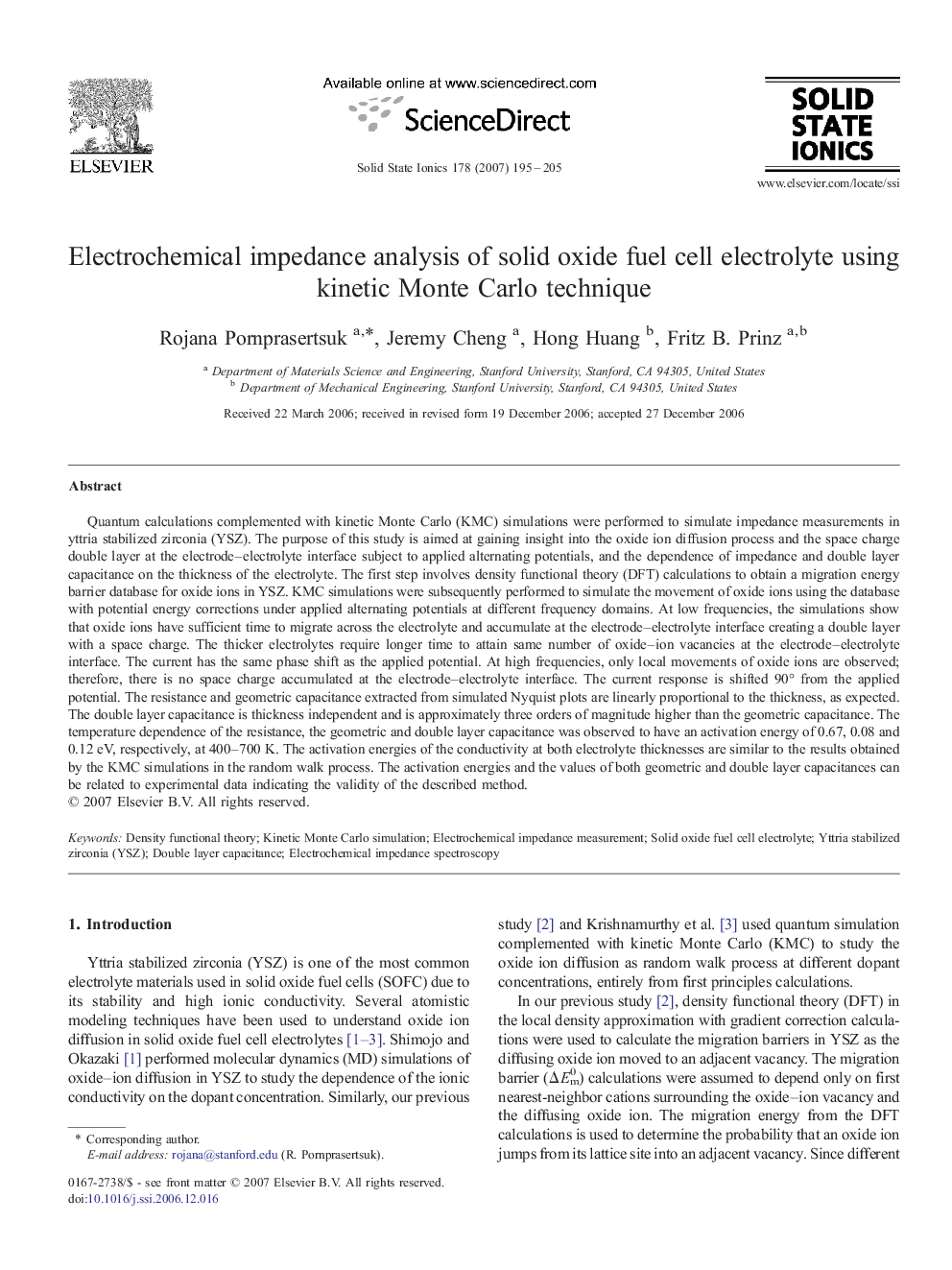| کد مقاله | کد نشریه | سال انتشار | مقاله انگلیسی | نسخه تمام متن |
|---|---|---|---|---|
| 1298315 | 1498396 | 2007 | 11 صفحه PDF | دانلود رایگان |

Quantum calculations complemented with kinetic Monte Carlo (KMC) simulations were performed to simulate impedance measurements in yttria stabilized zirconia (YSZ). The purpose of this study is aimed at gaining insight into the oxide ion diffusion process and the space charge double layer at the electrode–electrolyte interface subject to applied alternating potentials, and the dependence of impedance and double layer capacitance on the thickness of the electrolyte. The first step involves density functional theory (DFT) calculations to obtain a migration energy barrier database for oxide ions in YSZ. KMC simulations were subsequently performed to simulate the movement of oxide ions using the database with potential energy corrections under applied alternating potentials at different frequency domains. At low frequencies, the simulations show that oxide ions have sufficient time to migrate across the electrolyte and accumulate at the electrode–electrolyte interface creating a double layer with a space charge. The thicker electrolytes require longer time to attain same number of oxide–ion vacancies at the electrode–electrolyte interface. The current has the same phase shift as the applied potential. At high frequencies, only local movements of oxide ions are observed; therefore, there is no space charge accumulated at the electrode–electrolyte interface. The current response is shifted 90° from the applied potential. The resistance and geometric capacitance extracted from simulated Nyquist plots are linearly proportional to the thickness, as expected. The double layer capacitance is thickness independent and is approximately three orders of magnitude higher than the geometric capacitance. The temperature dependence of the resistance, the geometric and double layer capacitance was observed to have an activation energy of 0.67, 0.08 and 0.12 eV, respectively, at 400–700 K. The activation energies of the conductivity at both electrolyte thicknesses are similar to the results obtained by the KMC simulations in the random walk process. The activation energies and the values of both geometric and double layer capacitances can be related to experimental data indicating the validity of the described method.
Journal: Solid State Ionics - Volume 178, Issues 3–4, February 2007, Pages 195–205